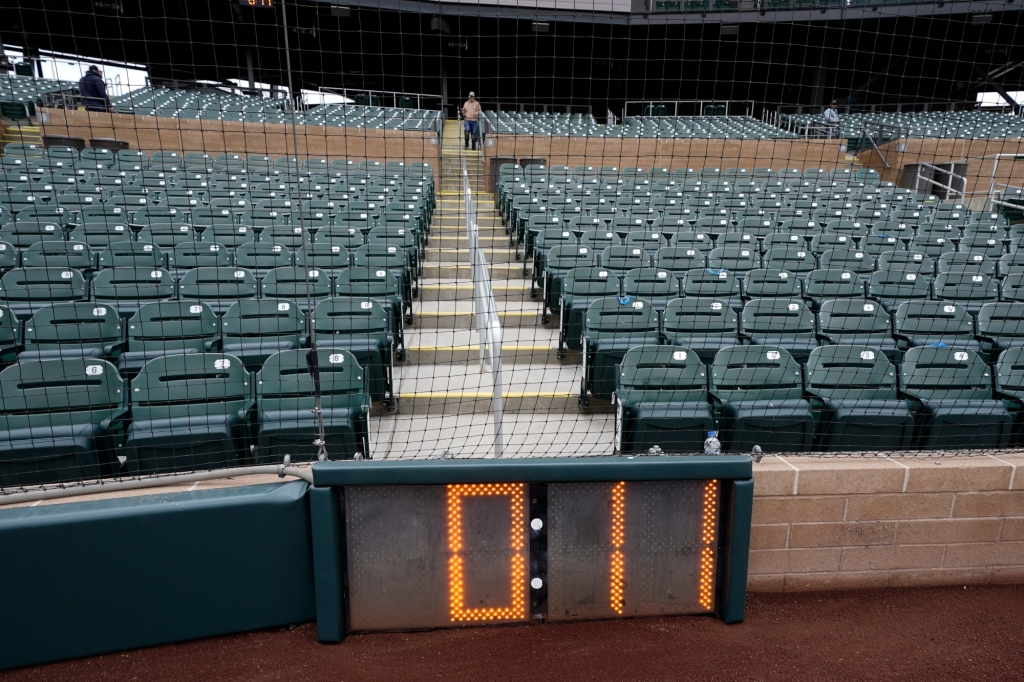PEORIA, Ariz. — Jo Adell produced a couple of firsts for the Angels.
A few innings after Adell hit the Angels’ first homer of the spring Saturday, he was tagged for the team’s first timer violation.
“Just a part of it,” Adell shrugged. “It’s fine. We’ll get in the rhythm of it. There are going to be some violations here and there, but that’s part of everybody just getting with the new rules.”
Adell had stepped out of the box to gather himself after swinging at a pitch in the dirt. He stepped back in but was looking down at his feet as the timer hit seven seconds, so plate umpire Mike Muchlinski immediately called time, pointed to his wrist and pointed to Adell. The count flipped from 2-and-1 to 2-and-2.
Adell’s violation was one of four in the Angels’ 5-1 victory over the Seattle Mariners, a game that lasted 2 hours, 16 minutes. There was an audible gasp from the departing fans when they heard the game time announced.
Major League Baseball instituted the pitch timer this year to cut some of the dead time that had caused the average major-league game to go beyond three hours in recent years.
With the bases empty, the pitcher has 15 seconds from the time he receives the ball to begin his delivery. With any base occupied, the timer is set at 20 seconds. There are 30 seconds between hitters. The hitter must be prepared for the pitch with eight seconds on the clock.
Umpires will call an automatic ball or strike, depending whether the pitcher or hitter is in violation.
As the clock was used for the first time in major-league games Friday and Saturday, the response from most players has been positive, with the caveat that it will take some adjustment.
“Once everyone gets used to it, it’s going to be a little more relaxed and everyone’s going to be kind of back to normal, but the pitch clock will still be there so it’ll be a tick quicker,” said Angels catcher Matt Thaiss, who had played with a clock last year at Triple-A.
Thaiss said…
Read the full article here







